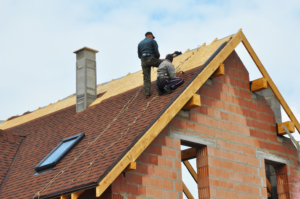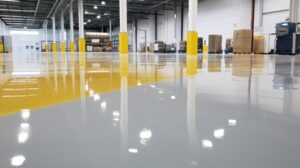Home » Home Improvement
Category Archives: Home Improvement
What You Need to Know About Window Replacement
Window Replacement Waukesha can be costly. But if you arm yourself with the right terminology, you can make smart choices that will save you money in both the short and long run.

Standard windows include double-hung, sliding and casement models. You’ll also encounter specialty options like muntins and mullions, which add architectural interest but aren’t required for the structural integrity of the window.
The frame material you choose for your replacement windows can make or break their performance, durability, and aesthetics. It is a decision that should be made carefully after evaluating the specific needs of your home and your budget.
The best window frames are the ones that balance the needs of your home with your personal style and aesthetic preferences. Your chosen frame material should also consider your energy efficiency needs and the potential impact on your home’s longevity and maintenance requirements.
Metal frames are strong and durable but can be susceptible to corrosion in some environments. They have high thermal conductivity, making them less energy efficient than other frame materials. To counteract this issue, they should be equipped with a thermal break or insulation.
Vinyl frames are affordable, low-maintenance, and good insulators against heat and cold. They are also water resistant, which makes them a popular choice for humid climates. However, they may warp in extreme heat and many have warranty exclusions and limitations.
Wood frames offer a natural, classic look that complements any architectural style. They are a great option for homeowners that want to customize their appearance, but they must be properly maintained to prevent rot and mildew from developing. They are also a good choice for homeowners that prioritize energy efficiency, as they provide excellent insulation and help to maintain a comfortable indoor temperature.
Fiberglass frames are a popular choice for their strength and durability. They are also highly customizable and can be painted to match any aesthetic. However, their high initial cost can make them a costly alternative to other frame materials.
Aluminum frames are lightweight and strong, making them an ideal choice for coastal homes. They have a smooth surface that resists corrosion and can be powder-coated in a variety of colors. However, they have a high level of thermal conductivity, which can increase cooling costs and potentially affect the comfort of your home. To mitigate this issue, aluminum frames should be equipped with a thermal break or insulated glazing to reduce their energy transfer.
Composite frames, or clad wood frames, are constructed with a wooden core surrounded by vinyl, fiberglass, or aluminum. This provides the aesthetics of wood with the added benefits of each of these other frame materials.
Glass
When it comes to window replacement, many homeowners focus on the frame type and color as well as how the windows will complement their home’s style. However, the glass is another important consideration for energy efficiency, aesthetics, and durability. Window glass is available in a wide range of options and costs, with different capabilities and features that can make one type better for specific applications.
The simplest option is standard single-pane glass, which generally costs between $3 and $12 per square foot. Double-pane or insulated glass is typically more expensive, ranging from $10 to $30 per square foot. Tempered or laminated glass is also more costly, with prices ranging from $25 to $50 per square foot. Low-E glass is more expensive than standard glass, ranging from $50 to $100 per square foot, but it offers significant energy savings over time.
Most replacement windows come with a lifetime warranty on the entire unit, including the frame and glass. However, the window manufacturer may offer a separate warranty on the glass alone, which is usually limited to five years.
A damaged or deteriorated window pane is more than just an eyesore; it can cause energy loss, increase utility bills, and create a safety risk for your family. Replacement glass is a cost-effective, convenient, and environmentally friendly solution to address these issues without the hassle and expense of replacing the entire window.
Whether you are replacing a single broken windowpane or upgrading your old, leaky double-pane windows to new, insulated units, the process is relatively simple and quick. The broken pane is removed, the frame, if necessary, is cleaned up and caulked, and the new insulated glass (IGU) is inserted and sealed into place. Most projects can be completed in less than a day, with minimal disruption to your home’s daily routine.
Keep in mind, however, that a glass-only replacement won’t solve other issues, such as problems with the locks, balances, or sashes; water or air leakage around the frame; or rotting around the window frames. If you are experiencing these other problems, a full window replacement will be necessary.
Hardware
When it comes to choosing replacement windows for your home, there’s more than just the glass, sashes and frames. Window hardware—from locks and latches to cranks and hinges—plays an important role in how your new windows perform.
The type of hardware you choose for your replacement windows depends on the style of window you select and how it’s mounted to the frame. For example, awning and casement windows use crank handles that are easier to open than sliding sash windows. In general, window hardware is designed to keep your sashes open or closed, either for ventilation or security. You can also find hardware that will help you operate your window from the inside or outside of your home.
Window replacement companies typically offer a variety of window styles to meet your needs and complement your home’s style. For instance, you can replace older sash windows with double-hung windows that slide up and down or tilt in for cleaning. Another option is to do a full-frame window replacement, which involves removing the old sashes down to the framing and then installing new windows in the existing frame.
If you’re replacing an existing wood window, it’s important to choose a low-maintenance material for the exterior. Wood will expand and contract depending on the weather, which can cause it to swell or warp over time. uPVC, or un-plasticised polyvinyl chloride, is a popular choice for modern windows because it is durable, rot-resistant and will not expand or contract as much.
You’ll also need to decide if you want to do a full-frame or insert window replacement. A window that is designated for new construction has a nailing fin, which helps secure it in the rough opening of a wall. If you’re upgrading an existing window, a replacement window without this flange will attach with fasteners that run through the interior casing of the window.
Window hardware is often overlooked, but it plays an important role in your home’s functionality and security. By understanding the different types of hardware and how they work, you can make the best decision for your home’s windows.
Installation
A professional window installer can help you choose between full-frame replacement and insert window replacement. Full-frame replacement windows are installed within the existing frame, removing only the operating hardware and cover plates. This is a great choice for older homes with deteriorating frames that have become difficult to open and close. It also allows installers to address lack of insulation around the window.
The full-frame replacement process is also ideal if you plan to change the size or shape of a window opening. The installation is more involved and expensive than replacement, but it’s the best option if you want to improve your home’s energy efficiency.
New construction windows are installed during building or major renovations and are nailed directly to the studs. They are a great way to upgrade your home’s appearance and add more natural light.
When selecting a new construction window, it’s important to consider your home’s style and architecture. The new window should be designed to complement your home’s design and function seamlessly.
Installers can help you select the right window for your home and guide you through the process of choosing a style, frame material and other options that will make it both beautiful and efficient. Once the window is purchased, your installer will prepare the opening for installation by removing any debris and ensuring that the sill and trim are level and plumb. They may also need to perform a “cut-back” by removing a strip of the siding or window stool in order to properly install the new window.
Before your installers arrive, you can help to make the installation process go more smoothly by clearing the area around your windows of items that might get in their way. Remove any toys, furniture, rugs or breakables inside the home and move flower beds and outdoor equipment away from the windows. The installers will need a clear path to your windows and will protect your floors, walls and furnishings with drop cloths as they work. They will also need a clear path outside to your door, so please move cars and pet cages out of the way.

